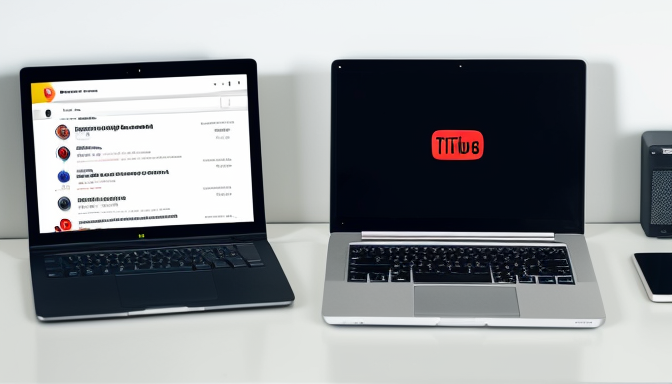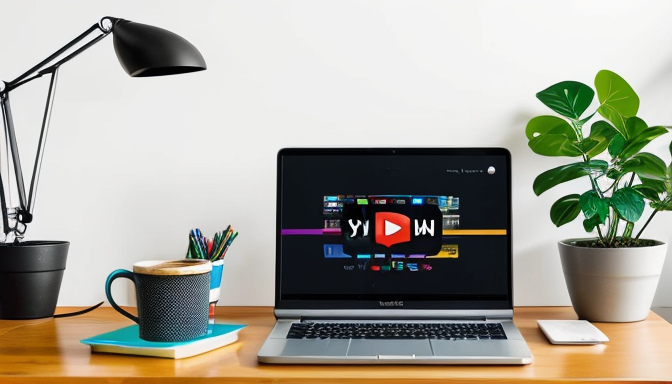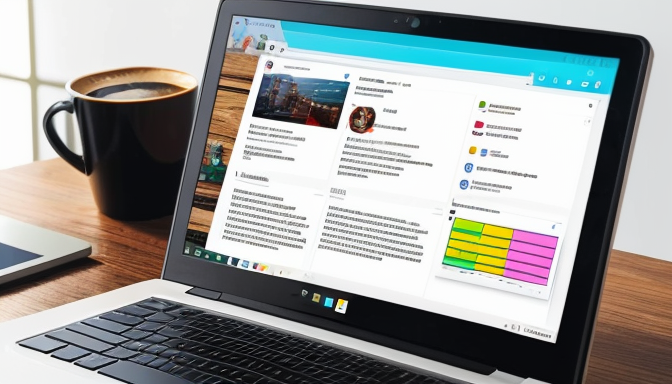This article explores the various features associated with downloading YouTube videos in MP4 format. It highlights effective methods, tools, and the essential legal considerations to ensure you can maximize your content effectively.
Understanding YouTube’s Download Options
YouTube provides users with limited built-in download options, primarily available through its premium subscription service. This section will clarify these options and their implications for users who wish to access content offline.
Why Download YouTube Videos in MP4 Format?
The MP4 format is one of the most popular video formats due to its exceptional compatibility and quality. This section discusses the significant advantages of downloading YouTube videos in MP4 format, catering to both personal enjoyment and professional use.
- Quality and Compression Benefits: MP4 maintains high video quality while ensuring reasonable file sizes, making it ideal for storage and playback.
- Comparing MP4 with Other Formats: This section offers a comparison of MP4 with other prevalent formats, allowing users to make informed choices based on their needs.
- Device Compatibility: MP4’s versatility ensures seamless playback across various devices, including smartphones, tablets, and computers.
Using Third-Party Tools for Downloading
While YouTube offers limited options, numerous third-party tools enable downloading videos in MP4 format. This section reviews popular software and online services that simplify the downloading process.
Legal Considerations for Downloading YouTube Videos
Understanding the legal implications of downloading content from YouTube is crucial. This section outlines pertinent copyright laws and YouTube’s terms of service regarding video downloads.
- Fair Use vs. Copyright Infringement: This section clarifies the concept of fair use in relation to downloading YouTube videos, providing examples to differentiate between legal and illegal downloads.
- Consequences of Violating YouTube’s Policies: Users must be aware of potential repercussions, including account suspension and legal action for policy violations.
Best Practices for Downloading YouTube Videos
To maximize the benefits of downloading YouTube videos, users should adhere to best practices. This section offers practical tips for efficient and effective downloading.
- Choosing the Right Quality Settings: Selecting appropriate quality settings is vital for optimizing video downloads. Guidance on choosing the right resolution and bitrate is provided.
- Organizing Downloaded Content: Proper organization of downloaded videos is essential for easy access and management. This section discusses effective strategies for categorizing and storing downloaded content for future use.
In conclusion, understanding the features, tools, and legalities surrounding downloading YouTube videos in MP4 format is essential for maximizing your content. By following best practices and being informed about your options, you can enhance your viewing experience while staying within legal boundaries.

Understanding YouTube’s Download Options
YouTube is one of the most popular platforms for video content, and its ability to allow users to download videos for offline viewing is a significant feature. However, the download options available on YouTube can be quite limited, which can be frustrating for users who want to access their favorite videos without an internet connection. This section will explore the built-in features of YouTube regarding video downloads and the implications for users seeking offline access.
One of the primary ways users can download videos from YouTube is through the YouTube Premium subscription. This paid service allows subscribers to download videos directly to their devices for offline viewing. However, it is important to note that not all videos are available for download, as content creators can choose whether to enable this feature on their videos. Additionally, downloaded videos can only be viewed within the YouTube app and cannot be transferred to other devices or shared with others, which limits the flexibility for users.
For users who do not wish to subscribe to YouTube Premium, there are alternative methods to download videos, although these come with their own set of challenges. Many third-party applications and online services claim to offer the ability to download YouTube videos. However, using these tools may violate YouTube’s terms of service and can also pose risks such as malware or poor video quality. Therefore, users should exercise caution and consider the legality and safety of these alternatives.
Another important aspect to consider is the video quality and format when downloading. YouTube typically offers videos in various resolutions, including 720p, 1080p, and even 4K for some content. Users should choose the appropriate quality based on their device’s capabilities and their internet connection. Additionally, while the MP4 format is widely recognized for its compatibility across devices, not all download methods guarantee the same level of quality or file size, which can affect the viewing experience.
In summary, while YouTube provides built-in features for downloading videos, these options can be limited, particularly for non-premium users. The implications of these limitations highlight the need for users to be aware of the available methods and the potential risks involved. Understanding these factors will help users make informed decisions when seeking offline access to their favorite YouTube content.

Why Download YouTube Videos in MP4 Format?
In today’s digital age, the ability to download videos from platforms like YouTube has become increasingly valuable. One of the most popular formats for this purpose is MP4, known for its versatility and high-quality output. This section will explore the numerous advantages of downloading YouTube videos in MP4 format, catering to both personal and professional needs.
- Wide Compatibility: MP4 is universally accepted across various devices and operating systems, making it an ideal choice for users. Whether you’re using a smartphone, tablet, or computer, MP4 ensures that your videos can be played seamlessly without the need for additional software.
- High-Quality Video: One of the standout features of MP4 is its ability to maintain excellent video quality while compressing file sizes. This means you can enjoy crisp visuals without consuming excessive storage space, which is especially beneficial for users with limited device memory.
- Efficient Streaming: MP4 files are optimized for streaming, allowing for smoother playback even on slower internet connections. This is particularly advantageous when watching videos offline or in areas with unstable internet access.
- Editing Flexibility: For content creators and professionals, MP4’s compatibility with various editing software makes it easier to manipulate and enhance video content. This flexibility allows for greater creativity and customization in video production.
In addition to these benefits, there are practical reasons for downloading YouTube videos in MP4 format:
- Offline Access: Downloading videos allows users to access their favorite content without relying on an internet connection. This is particularly useful for long journeys or areas with poor connectivity.
- Content Preservation: By downloading videos, users can ensure that valuable content is preserved for future viewing, especially if the original video is removed or made private on YouTube.
- Educational Use: Educators can download instructional videos in MP4 format for classroom use, ensuring that students have consistent access to educational material without the need for internet access.
In conclusion, downloading YouTube videos in MP4 format offers a multitude of benefits that enhance user experience, whether for personal enjoyment or professional use. Its compatibility, quality, and efficiency make it a preferred choice for many, ensuring that users can maximize their content effectively.
Quality and Compression Benefits
The MP4 format is renowned for its ability to deliver high-quality video while keeping file sizes manageable. This is primarily due to the advanced compression techniques utilized within the MP4 format. Understanding how these compression methods work is essential for users who want to optimize their video playback and storage capabilities.
Compression in MP4 format involves reducing the amount of data required to represent video content without significantly sacrificing quality. This is achieved through various algorithms that analyze the video frames and eliminate redundant data. The result is a file that is both efficient for storage and effective for playback.
One of the key benefits of MP4 compression is its adaptive bitrate streaming. This technology allows the video quality to adjust dynamically based on the user’s internet speed. For instance, users with slower connections may receive a lower quality stream, which ensures smooth playback without buffering. Conversely, users with faster connections can enjoy higher resolution videos. This adaptability makes MP4 an excellent choice for streaming platforms like YouTube.
Moreover, the MP4 format supports a range of codecs, such as H.264 and AAC, which are known for their efficiency in compressing video and audio data. H.264, in particular, is widely regarded as one of the most effective codecs for maintaining video quality at lower bitrates. This means that users can store more videos on their devices without compromising on visual fidelity.
| Codec | Compression Efficiency | Quality Retention |
|---|---|---|
| H.264 | High | Excellent |
| H.265 | Very High | Outstanding |
| AAC | High | Good |
In addition to its technical advantages, the MP4 format is also user-friendly. Most devices, including smartphones, tablets, and computers, support MP4 playback, making it a versatile choice for users. This compatibility ensures that videos can be easily shared and viewed across various platforms without the need for additional software or plugins.
In conclusion, the MP4 format stands out for its . By utilizing advanced compression techniques, it allows users to enjoy high-quality video content while keeping file sizes reasonable. This efficiency not only enhances storage capabilities but also improves playback experiences, making MP4 an ideal format for both personal and professional use.
Comparing MP4 with Other Formats
The choice of video format can significantly impact both the quality and usability of your media files. Among various formats available, MP4 stands out due to its versatility. This section will delve into a comparison between MP4 and other popular video formats, such as AVI, MKV, and MOV, highlighting their pros and cons to aid users in making informed decisions based on their specific needs.
| Format | Pros | Cons |
|---|---|---|
| MP4 |
|
|
| AVI |
|
|
| MKV |
|
|
| MOV |
|
|
In conclusion, while MP4 is an excellent choice for most users due to its compatibility and efficiency, other formats like AVI, MKV, and MOV have their unique advantages and disadvantages. The best choice ultimately depends on your specific requirements, such as the intended use of the video, the devices you plan to use, and your quality preferences.
Device Compatibility
is a vital aspect of the MP4 format, ensuring that users can enjoy their video content across a wide range of devices. In today’s fast-paced digital world, where smartphones, tablets, and computers are ubiquitous, the ability to play videos seamlessly on various platforms is essential for an optimal viewing experience.
One of the key advantages of the MP4 format is its universal compatibility. Whether you are using an Android device, an iPhone, a Windows PC, or a Mac, MP4 files are supported across all these platforms. This means that users do not have to worry about format conversion or playback issues, which can be time-consuming and frustrating.
Moreover, the MP4 format is designed to maintain a balance between video quality and file size. This efficiency is particularly important for mobile devices, where storage capacity and data usage can be significant concerns. By using the MP4 format, users can enjoy high-quality videos without consuming excessive amounts of storage space or data.
Additionally, many popular media players and applications, such as VLC, QuickTime, and Windows Media Player, support MP4 playback. This wide acceptance further enhances the format’s usability, allowing users to easily access their favorite videos without needing specialized software.
Streaming services also favor MP4 due to its adaptability. For instance, platforms like YouTube and Vimeo utilize MP4 for their video content, ensuring that viewers can watch videos on various devices without encountering compatibility issues. This is particularly beneficial for content creators who want their videos to reach the broadest audience possible.
In terms of future-proofing, the MP4 format is likely to remain relevant as technology evolves. With the continuous development of mobile devices and computing technology, having a format that is widely supported and adaptable ensures that users will not face obsolescence in their video files.
To summarize, the MP4 format’s compatibility with smartphones, tablets, and computers is crucial for providing a seamless playback experience. Its universal acceptance, efficiency in quality and size, and support from major streaming services make it a preferred choice for users looking to enjoy video content across multiple devices.
In conclusion, when selecting a video format for downloading or sharing content, the MP4 format stands out as a reliable option that meets the diverse needs of today’s users. Its ability to deliver high-quality videos while ensuring compatibility across various platforms makes it an essential format in the digital landscape.
Using Third-Party Tools for Downloading
In today’s digital landscape, the ability to download YouTube videos in MP4 format has become increasingly popular among users. This section focuses on the various third-party tools available for this purpose, examining their features, advantages, and how they can enhance your video downloading experience.
Understanding Third-Party Tools
Third-party tools are software applications or online services developed by entities other than YouTube that allow users to download videos from the platform. These tools offer a range of functionalities that can cater to different user needs, from simple downloads to advanced editing features.
Popular Software for Downloading YouTube Videos
- 4K Video Downloader: This software allows users to download videos, playlists, channels, and subtitles from YouTube in high quality. It supports various formats, including MP4, and is user-friendly.
- YTD Video Downloader: A widely-used tool that enables downloading videos from YouTube and converting them into multiple formats. It offers a straightforward interface and fast download speeds.
- Freemake Video Downloader: This tool supports downloading videos in various resolutions and formats. Its batch download feature is particularly useful for users looking to save multiple videos at once.
Online Services for Quick Downloads
For those who prefer not to install software, several online services provide quick and easy video downloads:
- Y2Mate: An online platform that allows users to paste the YouTube video link and download it in MP4 format. It’s convenient and does not require any software installation.
- SaveFrom.net: This service offers a simple interface where users can enter the video URL to download their desired content in various formats.
- ClipConverter.cc: A versatile online tool that not only downloads videos but also converts them into different formats, catering to diverse user preferences.
Considerations When Choosing a Tool
When selecting a tool for downloading YouTube videos, users should consider the following:
- Ease of Use: The interface should be intuitive, allowing users to navigate easily.
- Supported Formats: Ensure the tool supports MP4 and other desired formats.
- Download Speed: Look for tools that offer fast download speeds to save time.
- Legal Compliance: Always verify that the tool adheres to copyright laws and YouTube’s terms of service.
In conclusion, using third-party tools for downloading YouTube videos in MP4 format can significantly enhance the user experience. By understanding the available options and making informed choices, users can efficiently access their favorite content offline, ensuring that they maximize the value of their digital media consumption.

Legal Considerations for Downloading YouTube Videos
When it comes to the legal implications of downloading content from YouTube, it is crucial for users to understand the boundaries set by copyright laws and YouTube’s own terms of service. This section aims to clarify these legal aspects and provide essential insights for users who wish to download videos from the platform.
Copyright Laws and YouTube’s Terms of Service
Under copyright law, the creator of a video holds exclusive rights to their content. This means that downloading or distributing their videos without permission may constitute copyright infringement. YouTube’s terms of service explicitly state that users should not download any content unless a download button or link is provided by YouTube.
- Understanding Copyright: Copyright laws protect the rights of creators, ensuring they receive credit and compensation for their work.
- YouTube’s Policy: YouTube allows downloads through its app for offline viewing, but this feature is limited to certain content and does not extend to third-party downloads.
Fair Use vs. Copyright Infringement
The concept of fair use allows for limited use of copyrighted material without permission under specific circumstances. For instance, using a short clip for educational or commentary purposes may fall under fair use. However, downloading entire videos or using them for commercial purposes typically does not qualify as fair use and can lead to legal repercussions.
Consequences of Violating YouTube’s Policies
Users must be aware of the potential consequences of violating YouTube’s policies. These can include:
- Account Suspension: Repeated violations can result in the suspension or termination of a user’s account.
- Legal Action: Content creators may pursue legal action against users who infringe on their copyright, leading to potential fines or other legal penalties.
Best Practices for Legal Compliance
To navigate the legal landscape of downloading YouTube videos, users should consider the following best practices:
- Always Check Permissions: Look for videos that explicitly allow downloads or those that are in the public domain.
- Use YouTube’s Features: Utilize YouTube’s built-in download options where available to remain compliant with their terms.
In conclusion, while downloading YouTube videos can be tempting, understanding the legal implications is essential to avoid potential issues. By adhering to copyright laws and YouTube’s terms of service, users can enjoy content without the risk of infringing on creators’ rights.
Fair Use vs. Copyright Infringement
The concept of fair use is a critical aspect of copyright law that allows limited use of copyrighted material without requiring permission from the rights holders. This principle is particularly relevant in the context of downloading videos from platforms like YouTube. Understanding fair use is essential for users who wish to download content legally and ethically.
What is Fair Use?
Fair use is a legal doctrine that permits certain uses of copyrighted material under specific conditions. It is designed to promote freedom of expression by allowing users to engage with, comment on, or critique existing works. The U.S. Copyright Office outlines four factors to consider when determining whether a use qualifies as fair use:
- Purpose and Character of the Use: Non-commercial, educational, or transformative uses are more likely to be considered fair use.
- Nature of the Copyrighted Work: Using factual works may favor fair use, whereas creative works are less likely to qualify.
- Amount and Substantiality: Using a small portion of a work may favor fair use, but using the “heart” of the work may not.
- Effect on the Market: If the use negatively impacts the market for the original work, it is less likely to be considered fair use.
Examples of Fair Use in Downloading YouTube Videos
To clarify the distinction between legal and illegal downloads, consider the following examples:
- Downloading a video for personal use, such as for educational purposes or commentary, may fall under fair use.
- Creating a parody or remix of a YouTube video, where the original content is transformed into something new, is often protected as fair use.
- However, downloading a full movie from YouTube for distribution or commercial use is a clear violation of copyright and would not qualify as fair use.
Copyright Infringement
On the other hand, copyright infringement occurs when someone uses copyrighted material without permission, violating the rights of the copyright holder. This includes downloading, sharing, or distributing videos without authorization. The consequences of copyright infringement can be severe, including legal action, fines, and even account termination on platforms like YouTube.
In conclusion, understanding the nuances of fair use versus copyright infringement is essential for anyone engaging with YouTube content. By adhering to fair use guidelines, users can enjoy and utilize online videos responsibly while respecting the rights of creators.
Consequences of Violating YouTube’s Policies
Understanding the Risks of Violating YouTube’s Policies
When engaging with YouTube, it is crucial for users to understand that the platform has established a set of policies designed to maintain a safe and respectful environment for all. Violating these policies can lead to significant consequences that can affect both personal and professional interests.
Account Suspension and Termination
One of the most immediate repercussions of violating YouTube’s policies is the possibility of account suspension. Depending on the severity of the violation, YouTube may temporarily suspend your account, limiting your ability to upload, comment, or interact with other users. In more serious cases, repeated violations can lead to permanent account termination, which means losing access to all your content, subscribers, and any revenue generated through the platform.
Legal Action and Financial Penalties
In addition to account-related consequences, users should also be aware of the potential for legal action. If a user infringes on copyright laws or engages in other illegal activities, they may face lawsuits from content owners. This could result in hefty financial penalties, which can be detrimental, especially for content creators who rely on YouTube for their livelihood.
Impact on Reputation
Violating YouTube’s policies can also have a lasting impact on a user’s reputation. Once flagged for inappropriate behavior, it can be challenging to regain trust within the community. This loss of credibility can affect future collaborations, sponsorships, and overall audience engagement.
Community Guidelines and Copyright Policies
- Community Guidelines: These guidelines outline acceptable and unacceptable behavior on the platform. Violating these can lead to warnings, strikes, or account suspension.
- Copyright Policies: YouTube strictly enforces copyright laws. Users must ensure they have the right to use any content they upload, or they risk facing copyright claims.
Conclusion
In summary, it is essential for users to familiarize themselves with YouTube’s policies to avoid the serious repercussions that can arise from violations. By adhering to the guidelines, users can protect their accounts, financial interests, and reputations while contributing positively to the YouTube community.

Best Practices for Downloading YouTube Videos
Downloading YouTube videos can be a valuable way to access content offline, whether for personal enjoyment or educational purposes. To ensure a smooth and efficient downloading experience, it is essential to follow certain best practices. This section outlines key tips and strategies that can help users maximize their downloading efforts.
- Choose the Right Tools: Selecting reliable software or online services is crucial. Look for tools that are user-friendly, well-reviewed, and offer a range of features, such as batch downloading and format conversion.
- Understand Your Needs: Before downloading, consider why you want the video. Are you using it for educational purposes, personal entertainment, or professional presentations? This will guide your choices regarding quality and format.
- Quality Settings Matter: When downloading, always choose the highest quality available that your device can handle. Higher resolutions provide better viewing experiences, especially on larger screens. However, keep in mind that higher quality also means larger file sizes.
- Organize Your Downloads: Develop a systematic approach to organizing your downloaded content. Create folders based on categories such as “Educational,” “Entertainment,” or “Work Projects.” This will make it easier to find videos later.
- Check for Copyright Issues: Always be aware of the legal implications of downloading videos. Ensure that the content you are downloading is not protected by copyright unless you have explicit permission or it falls under fair use.
- Use Reliable Internet Connections: A stable internet connection is essential for downloading videos without interruptions. Avoid downloading during peak hours to reduce the risk of connectivity issues.
- Regularly Update Your Tools: Keep your downloading software up to date. Developers often release updates that improve functionality, security, and compatibility with the latest YouTube changes.
By following these best practices, users can enhance their experience when downloading YouTube videos. Not only do these strategies help in acquiring content efficiently, but they also ensure that the downloaded material is organized and legally compliant. Always remember to respect the rights of content creators while enjoying the vast array of videos available on YouTube.
Choosing the Right Quality Settings
When it comes to downloading videos from YouTube, selecting the appropriate quality settings is essential for ensuring an optimal viewing experience. The resolution and bitrate you choose can greatly impact both the quality of the video and the amount of storage space it requires. This section will guide you through the process of making informed decisions regarding these settings.
Understanding Resolution
Resolution refers to the number of pixels that make up the video image, and it is typically represented as width x height (e.g., 1920×1080 for Full HD). Higher resolutions provide clearer and more detailed images, which is particularly important for larger screens. Here’s a breakdown of common resolutions:
- 480p (SD): Suitable for smaller screens; offers basic quality.
- 720p (HD): A good balance between quality and file size; ideal for most users.
- 1080p (Full HD): Excellent quality, recommended for larger displays.
- 4K (Ultra HD): Provides stunning visuals but requires more storage and bandwidth.
Bitrate Explained
Bitrate, measured in kilobits per second (kbps), indicates the amount of data processed per second in the video. A higher bitrate usually means better video quality but also larger file sizes. Here’s how to choose the right bitrate:
- Low Bitrate (below 1000 kbps): Suitable for lower resolutions like 480p; may result in pixelation.
- Medium Bitrate (1000-2500 kbps): Works well for 720p videos; offers a good balance.
- High Bitrate (above 2500 kbps): Best for 1080p and 4K videos; ensures high-quality playback.
Factors to Consider
When selecting your quality settings, consider the following:
- Device Compatibility: Ensure the chosen resolution and bitrate are supported by your device.
- Internet Speed: Higher resolutions and bitrates require faster internet connections for smooth streaming.
- Storage Space: Assess how much space you have available; higher quality settings consume more storage.
In conclusion, by understanding the implications of resolution and bitrate, you can make informed decisions that enhance your video downloading experience. Whether you prioritize quality or storage efficiency, selecting the right settings will ensure that your downloaded videos meet your needs.
Organizing Downloaded Content
is crucial for anyone who frequently downloads videos, whether for personal enjoyment or professional use. Proper organization not only enhances accessibility but also streamlines the management of your video library. In this section, we will explore effective strategies for categorizing and storing downloaded videos, ensuring that you can easily find and utilize your content whenever needed.
To begin with, it’s essential to establish a clear naming convention for your downloaded videos. By using descriptive titles that include the video’s subject, date, and source, you can quickly identify the content without having to open each file. For example, a video titled “Cooking Tutorial – Pasta Recipe – 2023-10-01” is much easier to locate than a generic name like “video1.mp4.”
Next, consider creating folders and subfolders to categorize your videos based on themes, genres, or purposes. This hierarchical structure allows you to group similar content together, making it simpler to navigate your collection. For instance, you might have main folders for Cooking, Travel, and Education, with subfolders for specific topics like Italian Recipes or History Documentaries.
Utilizing metadata can also enhance your organization efforts. Many video players and management software allow you to add tags or descriptions to your videos. This feature enables you to search for videos based on specific keywords, further simplifying the retrieval process. For example, tagging a video with “healthy recipes” can help you find it quickly when you’re looking for nutritious meal ideas.
Another effective strategy is to maintain a download log. This log can be a simple spreadsheet where you record details about each video, such as the title, download date, source link, and a brief description. This not only helps in keeping track of your downloads but also assists in referencing the content later, especially if you need to revisit the source for updates or additional materials.
Lastly, regularly review and clean up your downloaded content. Over time, you may accumulate videos that are outdated or no longer relevant. By periodically going through your library and removing unnecessary files, you can maintain a more organized and efficient collection.
In conclusion, effectively organizing your downloaded videos is essential for easy access and management. By implementing a clear naming convention, creating structured folders, utilizing metadata, maintaining a download log, and regularly reviewing your content, you can ensure that your video library remains organized and accessible for future use.
Frequently Asked Questions
- Can I download YouTube videos for free?
Yes, there are various free tools and websites that allow you to download YouTube videos in MP4 format. However, be cautious and ensure that these tools comply with YouTube’s terms of service.
- Is it legal to download YouTube videos?
Downloading YouTube videos can be a legal gray area. While some content is available for personal use under fair use, many videos are protected by copyright. Always check the video’s licensing and YouTube’s terms before downloading.
- What are the best tools for downloading YouTube videos in MP4?
Popular tools include software like 4K Video Downloader, YTD Video Downloader, and online services such as ClipConverter. Each has its own features, so choose one that meets your needs.
- How do I choose the right quality when downloading?
When downloading videos, consider your device’s storage and playback capabilities. Higher quality means larger file sizes. Aim for a balance between quality and file size based on your needs.
- Can I download videos from YouTube for offline viewing on my mobile device?
Yes, many apps allow you to download videos for offline viewing. Just make sure to use apps that are authorized by YouTube to avoid any policy violations.
- What happens if I violate YouTube’s download policies?
Violating YouTube’s policies can lead to consequences like account suspension or even legal action. Always respect copyright laws and YouTube’s terms to avoid these issues.
- Are there any specific formats better than MP4?
While MP4 is widely compatible, formats like AVI or MKV may offer better quality for certain uses. However, they may not be as universally supported as MP4, so consider your needs before choosing.


















































